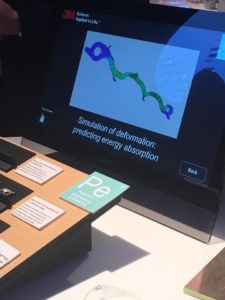By Heidi Ellsworth, RCS Partner.
The question is – are you asking the right questions about potential roofing software? Every day contractors encounter companies selling the next best thing to grow their roofing business. Sure, it can sound great, but it’s so easy to get lost in the minutiae of choosing a software and end up going down several trails that really do not pay dividends for the big picture – a stronger, more profitable company. The right software can relieve many of your pain points, like labor tracking, productivity, diversification, job profitability and more. But, you need to ask the right questions to ensure you choose the right product.
As roofing companies are looking for the right software there are many questions to consider. Here are 7 tips and questions to help:
1. Labor Tracking
You will want your roofing software to include labor tracking features. This will not only help with getting invoices out faster, but it will assist you with having a clearer understanding of your job ROIs.
Question – Does the software track labor?
2. Customer Data
There are several Customer Relationship Management (CRM) systems and many of them integrate with project management software. Some systems offer customer portals where you can share data, photos, job progress, inspections and invoices with customers at their convenience.
Question – Does the software offer a customer portal?
3. Mobile and Table Use
It does not seem possible to survive in today’s world without a smart device and that is especially true when it comes to business. Smart phones allow contractors to be in touch with their customers immediately – giving them a clear edge when it comes to customer service.
Question – Does the software work on all mobile and desktop platforms?
4. Cloud-based Access
Today, it’s all about communication. Progressive contractors can operate and communicate with customers and employees from anywhere, anytime. This is only possible with cloud-based solutions. Every step of the process is at the fingertips of management, crews and the sales team. The ability to communicate across numerous, if not all employees, allows for strong communications that correlates into a great customer experience.
Question – Is it cloud-based and available to all employees, anywhere, on any device?
5. Aerial Measurements
Aerial technology has been in place since 2008 and it just keeps getting better. Gathering roof measurements traditionally was a time-consuming process prone to mistakes such as mathematical errors or simple human error, but has now become a quick, easy and reliable technology.
Question – Does the software integrate or include aerial measurement technology?
6. Estimating
Advancements in estimating software, as well as the introduction of cloud-based access, enables strong estimating technology for virtually any size roofing contractor. Not every solution will fit every business right out of the box so it’s important to understand your company’s needs, how the technology fits into your existing processes and what new efficiencies can be realized through the implementation of an estimating tool.
Question – Does the estimating software fit the business needs?
7. Implementation
The most important thing you can do before purchasing any new technology is to take the time to do your research. Talk to other contractors you find through roofing associations or networks and see what has worked for them. You can also look at online reviews and utilize free trials to try out and get a full understanding of the options that are out there and how they are implemented.
Question – How will this work for the company/employees and how easy will it be to implement?
Jobba Trade Technologies and many other technology companies are also members of Roofing Technology Think Tank (RT3), an organization, which RCS is a part of, that helps roofing contractors understand important questions to ask about technology.
Stay up to date on the latest roofing industry trends when you sign up for the RT3 Smart Brief e-newsletter.
Source: RoofersCoffeeShop.

